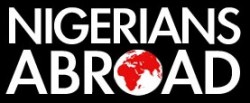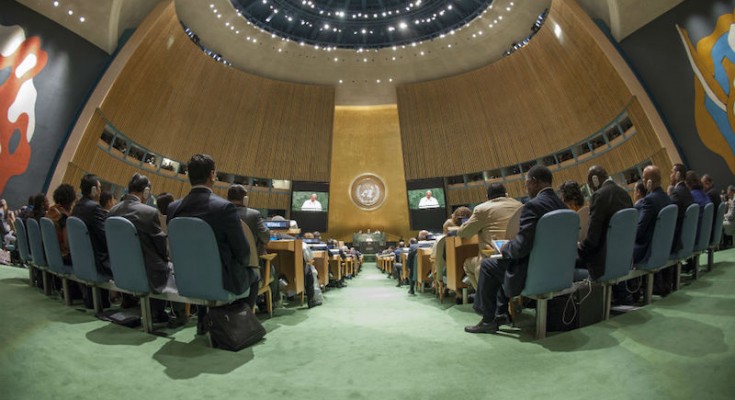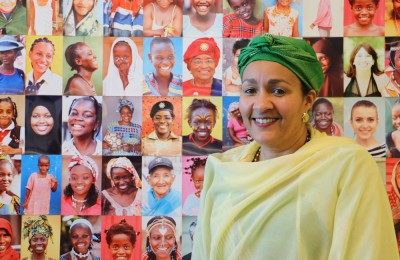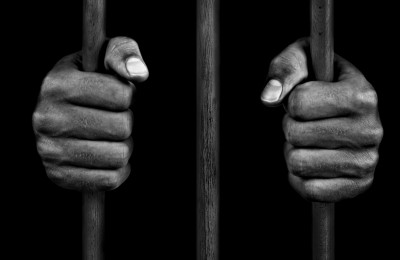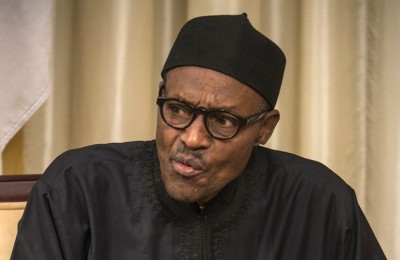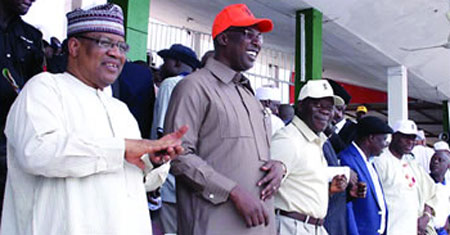Newly adopted Sustainable Development Goals could transform the continent
By Kingsley Igohobor
On 26 September, a day after world leaders adopted the new development agenda known as the 2030 Agenda for Sustainable Development, prominent personalities in world politics, social activism, business and entertainment gathered in New York’s Central Park for an annual event organized by the non-governmental organization, Global Citizens.
Among the distinguished personalities were US Vice President Joseph Biden, First Lady Michelle Obama and UN Secretary-General Ban Ki-moon. Other guests included Nobel Peace Prize Laureate Malala Yousafzai, British billionaire businessman Richard Branson and Grammy-Award winning singer Beyoncé Knowles.
Over 60,000 people witnessed the event whose aim was to raise awareness on the issues of gender equality, the environment, poverty, peace and justice. Top leaders who could not make it to the event, including US President Barack Obama and British Prime Minister David Cameron, addressed the crowd via video links.
Given that the UN had just agreed on the SDGs’ adoption, the festival became as much a victory lap as it was a rallying cry for individuals, organizations and countries to redouble their efforts to make the world a better place.
“Take your passion and compassion — and let’s make the global goals a global reality,” said Mr. Ban, in an impassioned speech at the event. The head of the UN was referring to the 17 SDGs and 169 targets designed to guide the world’s development agenda over the next 15 years. These goals, he said, are “a promise from your leaders. Hold them to it. Demand that they deliver.”
Ms. Obama, Ms. Yousafzai and Amina Mohammed, former UN special adviser on Post-2015 Development Planning, underscored the message of Mr. Ban, with the US first lady putting emphasis on the need for education for girls. True to form, Beyoncé spiced up the event, viewed on satellite television and the Internet by millions worldwide, with a performance that was both entertaining and instructive on the SDGs.
The pomp and the substance
Some 193 member states, most represented by their heads of state, ratified the SDGs on 25 September at the start of a three-day UN summit on sustainable development in New York. The 39-storey UN headquarters building was bathed in 17 different colours, each colour representing a goal, turning the iconic building into a dazzling spectacle.
Speaking at the summit, the world leaders pledged to work hard to achieve the goals and their targets. Chancellor Angela Merkel of Germany put it forcefully: “We want to change our world, and we can.”
The address by Pope Francis, head of the Catholic Church, to the UN General Assembly was particularly poignant. Speaking to heads of state and other dignitaries, he warned: “A selfish and boundless thirst for power and material prosperity leads both to the misuse of available natural resources and to the exclusion of the weak and the disadvantaged.”
But beyond the pomp lay the substance: that the SDGs aim to end poverty, hunger and inequality, tackle climate change, and build resilient infrastructures — all to be achieved between now and 2030. In particular, efforts will be deployed to reduce maternal mortality to below 70 per 100,000 live births, end HIV/AIDS, tuberculosis, malaria and other tropical diseases; ensure quality education and gender equality; achieve universal access to safe drinking water and energy; address climate change; and achieve at least a 7% global economic growth, among other major goals.
MDGs’ uneven benefits
Meeting the 169 targets would transform the world, some development experts say. It would lead to a world without wars, where everyone lives a good life, where people go to bed with stomachs filled with nutritious food, where the gulf between developed and developing countries is narrowed, where women and men get equal opportunities, where modern infrastructure is accessible to rural dwellers and where climate change no longer threatens human existence. A utopian dream?
Yet could this dream become reality? Why not, proponents of the SDGs respond. After all, the Millennium Development Goals (MDGs), regarded as largely successful, inspired less confidence in their ultimate achievement than the SDGs have received. Mr. Ban described the MDGs as the “most successful anti-poverty movement in history.” And Ms. Mohammed, in an interview with Africa Renewal, defined the 17 goals as “a response to the crises we have in the world today”.
The logic is if the MDGs were good for the world, the SDGs will be even better. For example, because of the MDGs, the number of people worldwide living in extreme poverty (less than $1.25 a day) fell from 47% in 1990 to 14% in 2015, while deaths of children worldwide fell to 6.6 million from 12.6 million during the same period, notes the World Bank.
But positive reviews of the MDGs may not reflect current socioeconomic situations for all developing countries, particularly in Africa. An MDGs assessment report on Africa released in September by the UN Economic Commission for Africa (ECA), the African Development Bank (AfDB), the UN Development Programme (UNDP) and the African Union (AU) indicates mixed results. While there has been progress in areas such as women’s political representation, maternal mortality, and secondary school enrolment, Africa could not meet all the targets, including that on poverty, blamed on poor implementation and a drip-feed of funds.
The reduction by more than half of the number of people living in extreme poverty, touted by MDGs proponents, was not universal, some critics say. Impressive economic growth in Brazil, China and Vietnam influenced that data. But the growth of these economies is currently slowing down, according to the International Monetary Fund, making it doubtful that their contribution to global poverty reduction in the next 15 years will be at the level witnessed in the past 15.
Dealing with realities
In addition, Africa’s economy, which has been growing at approximately 5% over the last decade, will slow to around 4.2% in 2015, according to the World Bank. Even if growth ticks up to around 5%, and China’s economy grows faster, between 6% and 7% of the global population will still be living in extreme poverty, says Jim Yong Kim, the president of the World Bank. Currently, of the over a billion people living in extreme poverty, 415 million are in Africa.
Worse, with falling oil and commodity prices, oil export countries such as Nigeria, Africa’s biggest economy, and Angola, among others, will most certainly face new economic headwinds that could complicate the poverty fight, says Kaushik Basu, the World Bank’s chief economist. This means that achieving the SDGs targets in Africa will require extraordinary efforts.
But statistics from Africa do not tell the whole story, counsels Carlos Lopes, the ECA’s executive secretary, in an interview with Africa Renewal. “Sometimes comparisons are not appropriate, methodologically speaking. You can’t compare a marathoner with a speed runner by saying that both have the same finish line,” says Mr. Lopes. Countries with better socioeconomic positions will achieve targets faster than the others, he says. The real success of the MDGs was that they “helped focus the efforts of [African] governments and development partners on pressing issues in human development,” according to the assessment report issued by the AfDB, AU, ECA and UNDP.
The SDGs include a heavy dose of pro-poor, pro-women, pro-equality, pro-development targets, which will challenge Africa, where HIV/AIDS, malaria, tuberculosis and other tropical diseases have set back wealth accumulation and development. The Ebola epidemic, which hit Guinea, Liberia and Sierra Leone from early 2014, will cost those countries a total of $1.6 billion in economic growth, reckons the World Bank. UNDP added that the West African region as a whole may suffer Ebola-related losses of $3.6 billion per year between 2014 and 2017, due to a decrease in foreign direct investment, border closures and flight cancellations.
Since the beginning of 2015, there have been 214 million new malaria cases in Africa and 438,000 deaths. “Fifteen countries, mainly in sub-Saharan Africa, accounted for 80% of malaria cases and 78% of deaths globally in 2015,” says the World Health Organization (WHO). Eradicating malaria and other tropical diseases would be huge for Africa.
SDGs vs. Agenda 2063
Ending hunger and increasing investments in rural infrastructure are also priorities for Africa, as are economic growth, access to energy and water and investments in agriculture. In 2013 African leaders adopted their own Agenda 2063 — a set of seven ‘aspirations’ that resemble the SDGs. These aspirations are not a planning document, explains Mr. Lopes. Rather, they envision “the Africa you would like to have 100 years after the founding of the OAU [Organization of African Unity],” the continental body that morphed into the AU in 2002. Last March, African leaders approved the aspirations’ first 10-year implementation plan.
The link between the SDGs and Agenda 2063 is clear from the first aspiration: “We want a prosperous Africa based on inclusive growth and sustainable development,” specifically an annual growth rate of at least 7% (the same as the SDG target), healthy and nourished citizens, and a three-fold increase in food and agriculture. Under aspiration 6, Africa hopes to achieve development, “relying particularly on the potential of women and youth.”
The alignment between Agenda 2063 and the SDGs is clear, experts say. But could Agenda 2063 interfere with the SDGs’ implementation? Not at all, says Mr. Lopes, who envisages a convergence of both agendas. “Africa will have their own agenda and then dialogue with the universal agenda,” he says, adding that African countries creating development plans on the basis of Agenda 2063 may decide to infuse SDG-related activities in those plans.
Considering that many African countries will depend on donor funds to implement the SDGs, there may be little wiggle room regarding which resources are allocated to what sectors. Mr. Lopes hopes Africa will not rely too heavily on donor funds. “Countries must generate internal revenue. No countries have developed without internal revenue,” he observes, with the caveat that donor money be used only to stimulate domestic resource mobilization.
Ms. Mohammed, the UN special adviser, hopes that the SDGs, just like the MDGs, will galvanize the continent into taking action to achieve set goals. Specific indicators for the SDGs will be released in March 2016, she says, which will help to measure the progress that each country makes to achieve set targets.
Given that most of the SDGs and their targets align with Africa’s priorities, the continent may well be on the brink of a transformation.
